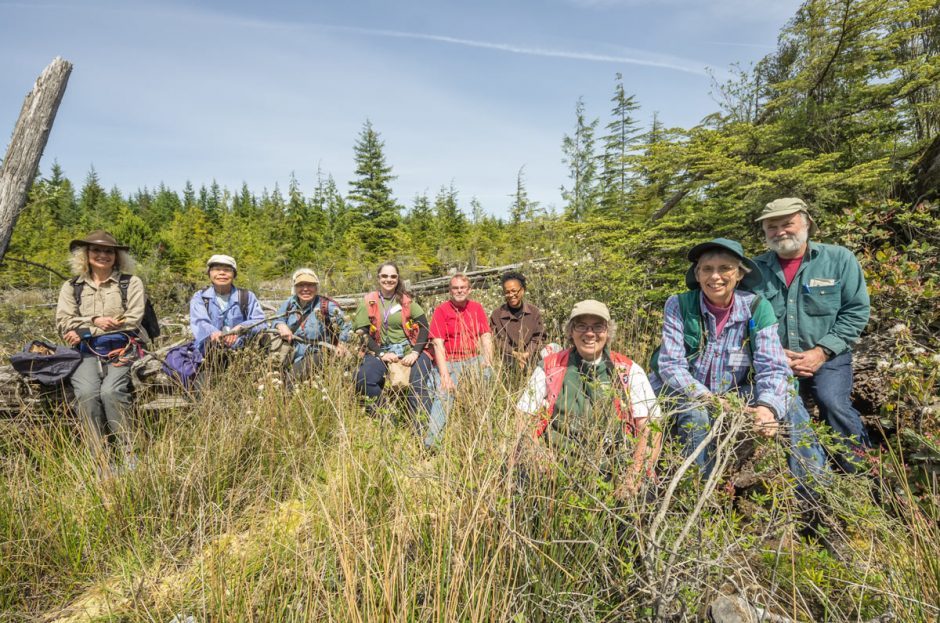I sat down with Olivia Lee, the Collections Manager of Lichens, Bryophytes, and Fungi, to help me create a quick guide to bioblitzes for newbies, like myself.
What is a bioblitz?

Walking towards the dry lake (Churn Creek Protected Area) | Photo: Ian Cumming
At the centre of a bioblitz is species identification. It’s an organized event where scientists from all fields of study and biodiversity enthusiasts from all over come to a designated area and try and identify as many species as possible within a 24 hour period; it’s quick and concentrated like the name suggests. Here are some examples of previous bioblitzes on Vancouver Island, and in Maple Ridge, and Squamish.
Who goes on a bioblitz?
The short answer: Anyone. The long answer: Those who go on a bioblitz have a wide range of experiences, qualifications, and curiosity levels. There are scientists and researchers, but members of the public are also encouraged to participate and learn more about biodiversity; there is something for everyone!

Western Red-backed Salimander at the Echo Lake BioBlitz – only found in southwestern BC and Vancouver Island. Photo taken by David Markwei
What happens during a bioblitz?
Identification, exploration, and education. The main aim of a bioblitz is to identify as many species as possible in 24 hours, but scientists also collect samples, give talks, and provide educational activities for the public. Skilled citizen scientists can also contribute to the identification of species, but many people are there to just check out what a bioblitz is all about. During each of the 24 hours, something is happening.
Ornithologists will be up in the early morning to study birds, chiropterologists will be up at night to study bats; many species are best observed at specific times of day. At the end of a bioblitz, there are often informal presentations of the findings. For example, after finding a particular bryophyte, Lee created a prop hat using a brown paper bag that mimicked its shape for her presentation.
What is the purpose of a bioblitz and why is it important?
A bioblitz is made up of two halves. The first half of a bioblitz is to get the public curious and interested in nature. The more people care about biodiversity, the more they will become active in conserving all aspects of nature. The second half is to gather information and collect specimens for researchers.
A bioblitz serves as a benchmark, meaning that it is used as a point of reference. It creates a full picture of what’s in a certain area at a certain time and that information can be used in a variety of ways, from research to conservation. Everyone is looking for different things and from different perspectives, so there are great finds and masses of information gathered. Bioblitzes are also a way to see what’s hurting and what’s thriving in an area.
Though people do make rare finds on bioblitzes, “[Olivia thinks] that things that are not rare are just as important [to find]. If they’re rare, we’re in trouble. If they’re healthy and we can see it, that’s good news”.
Interested in joining a bioblitz and learning more about biodiversity? Check out the events calendar on the Bioblitz Canada’s website and on the Parks Canada website for ones near you.

Group at wetland near junction of Back & Mitchell Bay Road., Malcolm Island. | Photo by Darryl Luscombe
